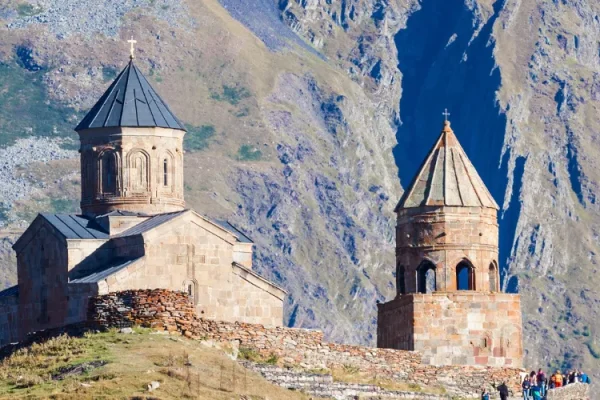Are you ready for the biggest show on Earth? The Rio Carnival is a festival that will take place in February 2024, before Lent, and will attract millions of people to the streets of Rio de Janeiro. It is a celebration of music, dancing, and creativity, where samba schools compete to impress the judges and the audience with their spectacular performances.
But what makes the Rio Carnival so unique and unforgettable? The answer lies in the costumes and floats that each samba school designs and produces to showcase their chosen theme. In this blog post, we will explore the history, meaning, and beauty of these elements that make the Rio Carnival a feast for the eyes.
The history of costumes and floats
The Rio Carnival has its origins in the 16th and 17th centuries when Portuguese colonizers brought to Brazil the tradition of celebrating before Lent with public games and lighthearted mockery. Over time, the festival acquired other influences, such as masks and costumes from European cultures, and samba and batucada rhythms from Afro-Brazilian cultures.
The first official parade took place in 1840, with polka and waltz music. At the beginning of the 20th century, samba schools emerged as a way for local neighbors to organize themselves and attend the carnival together. Each samba school had a theme, a song, and a parade entry that consisted of different sections or “wings”.
The costumes and floats evolved over the years, becoming more elaborate and extravagant. They reflect the theme of each samba school, which can be anything from historical events to cultural expressions, to social issues. The costumes and floats are designed and produced by the samba school members themselves, with meticulous attention to detail and craftsmanship.
The meaning of costumes and floats
The costumes and floats are not just for show. They have a symbolic and narrative function in the parade. They tell a story, convey a message, and express an identity.
One of the most impressive aspects of the Rio Carnival is the costumes. Each samba school has thousands of members who wear elaborate and colorful outfits that match their theme and story. The costumes are made by hand by skilled artisans who use various materials, such as feathers, sequins, beads, fabrics, plastics, metals, and even recycled items. The costumes are not only beautiful but also functional, as they have to withstand the heat, humidity, and movement of the parade.
The costumes are divided into different categories or roles within each samba school. The most important role is the queen of the drummers (rainha da bateria), who leads the percussion section of the samba school with her charisma and dance moves. She wears a stunning costume that usually reveals a lot of skin and features feathers, jewels, and glitter. The queen of the drummers is usually a celebrity or a model who represents the samba school in media events.
Another important role is the flag bearer (porta-bandeira), who carries the flag of the samba school with grace and elegance. She wears a long dress that covers her body and has a large skirt that can weigh up to 40 kg. She is accompanied by a master of ceremonies (mestre-sala), who wears a suit that matches her dress and dances around her to protect her from evil spirits. The flag bearer and master of ceremonies are judged on their style, coordination, and expression.
Other roles include the front commission (comissão de frente), which is a group of dancers who open the parade with a choreographed presentation that introduces the theme of the samba school; the allegorical cars (carros alegóricos), which are huge floats that carry symbolic figures or scenes related to the theme; the wings (alas), which are groups of dancers who wear similar costumes that represent different aspects or characters of the theme; and the highlights (destaques), who are dancers who wear extravagant costumes that stand out from the rest.
Each parade entry has a specific order that must be followed. It starts with the “comissão de frente”, which is a group of 10 to 15 people who introduce the samba school and set the mood and style of their presentation. They have choreographed dances in elaborate costumes that usually tell a short story.
Following them is the first float of the samba school, called “abre-alas”, which means “opening wing”. This float is usually the most impressive and eye-catching one, as it sets the tone for the rest of the parade. It often features large sculptures, moving parts, and special effects.
Next come the Mestre-sala and Porta-Bandeira, which are one to four pairs of dancers who lead the rest of the parade. They represent the king and queen of the samba school or their ambassadors. They wear elegant and sophisticated costumes that match the colors of their samba school flag, which they carry with pride.
Then come the different wings or “alas”, which are groups of dancers who represent different aspects or sub-themes of the main theme. They wear costumes that are related to their role or location in the parade. For example, there can be wings that represent animals, plants, characters, places, or concepts.
Each wing is accompanied by a float or “carro alegórico”, which is a moving platform that carries more dancers or performers. The floats are decorated according to their wing’s theme and often have elaborate shapes, colors, and details. They can also have sound systems, lights, or pyrotechnics.
At the rear of each parade entry is the drum line or “bateria”, which is composed of hundreds of percussionists who play the samba rhythm that accompanies the song or “samba-enredo”. They wear costumes that are usually simpler than the other wings, but still colorful and festive.
The beauty of costumes and floats
The costumes and floats are not only meaningful but also beautiful. They are works of art that showcase the creativity, talent, and passion of the samba school members. They are made with various materials, such as fabrics, feathers, beads, sequins, foam, paper mache, or metal. They are often hand-made or hand-applied by volunteers who spend months working on them.
The costumes and floats are designed to be visually stunning and captivating. They use bright colors, shiny elements, contrasting patterns, and textures to create an aesthetic impact. They also use movement, shape, and size to create a dynamic effect. Some costumes and floats can be very large or tall, creating a sense of grandeur and majesty.
The costumes and floats are also designed to be fun and playful. They use humor, irony, satire, or fantasy to create a sense of joy and amusement. They also use references, symbols, or metaphors to create a sense of connection and relevance. Some costumes and floats can be very clever or witty, creating a sense of surprise and admiration.
The costumes and floats are the soul of the Rio Carnival. They are the result of a collective effort, a cultural expression, and an artistic manifestation. They are the way that the samba schools communicate their identity, their message, and their emotion to the world. They are the reason why the Rio Carnival is a feast for the eyes that will awe and thrill you in 2024.
Rio Carnival isn’t just a celebration; it’s a cultural treasure trove of Brazilian spirit. And here’s the exciting part: With Away Exotics, you can delve into the rich history and stories behind the dazzling floats and costumes at Rio Carnival 2024. It’s your time to dance, sing, and samba your heart out in the heart of Carnival like never before. Join us to explore this extraordinary experience with Away Exotics – it’s an opportunity you won’t want to miss!




